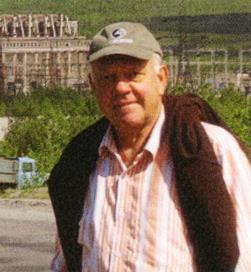
Internationally recognised marine geochemist who contributed greatly to our knowledge of marine mineral deposits.
Geoff Glasby obtained a First Class Honours degree in chemistry in 1966 from Oxford University, and a PhD from Imperial College in 1970 for work on manganese nodules from the Carlsberg Ridge and elsewhere. He authored more than 350 scientific publications including two edited volumes for Elsevier’s Oceanography Series. Victoria University and Oxford University awarded him DSc degrees in 1981 and 1987 respectively, on the basis of these publications.
Geoff began the first half of his career in 1970 with the New Zealand Oceanographic Institute (NZOI). There, he initiated research on South Pacific manganese nodules, leading expeditions on the
RV Tangaroa in 1974 and 1976. The resulting research laid the foundations for South Pacific manganese nodule research, which continues today. Geoff collaborated widely, forming multi-disciplinary partnerships within NZ and at the University of Hawaii, publishing many papers and editing the Elsevier book
Marine Manganese Deposits during this period. In 1979 Geoff took up an Alexander von Humbolt Fellowship at the Technische Hochschule, Aachen, to work on the distribution and geochemistry of manganese nodules in the equatorial and Southwest Pacific.
On returning to New Zealand in 1981, Geoff initiated a study of submarine hydrothermal deposits on the Tonga-Kermadec Ridge and adjacent areas north of NZ. He led two further RV Tangaroa cruises, recovering the first hydrothermal minerals from the Tonga-Kermadec Ridge in 1981. This was a precursor to the highly successful New Zealand programme on island arc hydrothermalism of recent years. However, as the decade progressed, interest in and funding of marine minerals research declined and Geoff turned to marine pollution studies in NZ harbours as well as editing Antarctic Sector of the Pacific for Elsevier’s Oceanography Series.
The adoption of 'user-pays' and constestable research funding by the NZ government led to NZOI becoming part of a semi-independent Crown research institute (NIWA) in 1992. This affected Geoff profoundly, and led directly to his leaving NZ for the second half of his career.
From 1992, until he developed dementia more than 20 years later, Geoff held a variety of short term attachments worldwide: "on the road", as he described it. He spent time in Japan, China, Germany, Poland and Russia, bringing partially completed studies to fruition and initiating new ones with his hosts. He was very active, publishing on Northwest Pacific hydrothermal deposits with Japanese colleagues; on North Pacific ferromanganese oxide crusts with Chinese colleagues and on a variety of topics with Russian colleagues.
Between assignments he returned to Sheffield to catch up with his parents, who pre-deceased him by a few years. He was an only child and never married. Towards the end of his active life his interests broadened further to working and publishing on non-geological topics including the 1932 mass trespass on Derbyshire’s Kinder Scout. He also contributed many historical feature articles to Geoscientist, becoming the magazine's single most prolific author of features (after, perhaps, the late Joe McCall).
Geoff will be remembered by his friends and colleagues as a brilliant scholar and forthright character who was never afraid to speak his mind.
By David Cronan, Colin Summerhayes and Karin Knedler